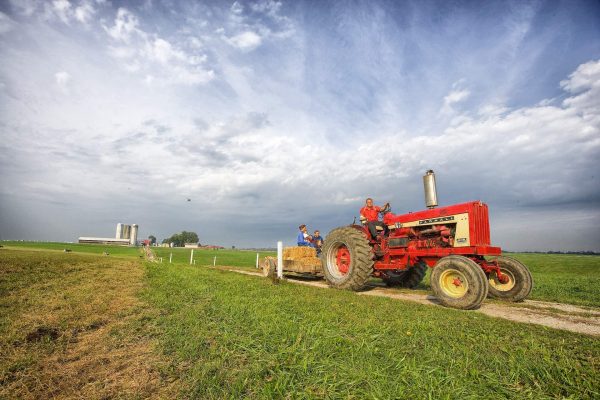If you’re driving for work in hot weather, whether it’s a car, truck, forklift or excavator, some health and safety risks need to be addressed.
Sunburn and burns
The sun can heat exposed metal hot enough to cause superficial burns to naked skin, especially if the metal is painted a dark colour. It can also heat up dashboards and steering wheels. Anyone operating an uncovered tractor or excavator will know how hot the seat and controls can become.
If you’re exposed to the sun, then you are at risk of sunburn (which increases the risk of melanoma skin cancer) and premature ageing.
Reducing the risk: UV-protective clothing that gives at least factor 50 UV protection, but is also light and well-ventilated will help. These include long-sleeved shirts, sunglasses, wide-brimmed hats and long trousers. Sunscreen with a high SPF rating should be used – again, at least factor 50. It should be applied 20 minutes before exposure and reapplied every hour or two, depending on the level of sweating.
Heatstroke and heat exhaustion
Exposure to high temperatures over a longer period can cause heatstroke. This can easily happen when on vehicles with no cover, or in vehicles with no air conditioning if they are moving slowly enough to prevent enough air to flow. Symptoms include nausea, headache, elevated heart rate, confusion and, ultimately, loss of consciousness.
Reducing the risk: Take a break at the hottest time of the day, deferring work until later, if possible. Give training to drivers and machine operators on the dangers of heatstroke. Teach your team how to recognise the symptoms in others. Provide shade or air-conditioned areas for breaks.
Dehydration
Not drinking enough causes the onset of dehydration. Eventually, the effects of dehydration are the same as being at the legal blood alcohol limit for driving, which is not desirable when operating heavy machinery or driving. Dehydration also increases the risk of urinary tract infections, kidney stones and kidney failure. The older you are, the more you lose your sense of thirst, so you may be becoming dehydrated without knowing about it.
Symptoms include dark-coloured urine, fatigue, dizziness, extreme thirst, and confusion. Severely dehydrated people need immediate medical treatment, whereas mild and moderate dehydration can be cured by drinking more fluids.
Reducing the risk: Set a minimum level of water to consume per day, even if you don’t feel thirsty. A good minimum benchmark could be two litres during the workday on a hot day. Avoid drinks that act as diuretics, such as caffeine-containing drinks like coffee and energy drinks. While they will still hydrate you, they also cause you to lose water.

Equipment breakdown
Hot weather causes more stress on equipment. It reduces the power output of engines, meaning they have to work harder, and they use more fuel. If the air conditioning is active, this places a burden on the engine.
With electric-powered equipment, such as some forklifts, the battery can drain much quicker.
Extreme heat can cause the pressure in tyres to expand enough to make punctures much more of a risk. This is more likely when the last time the tyres were checked or filled was in very cold weather.
Reducing the risk: ensure that vehicles are maintained properly.
